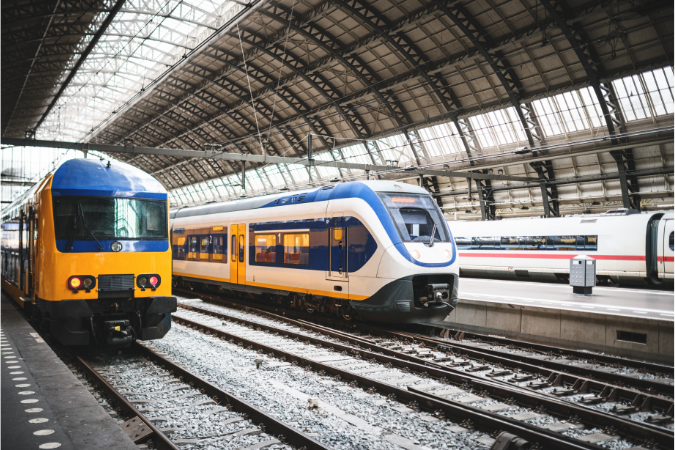
How An Automated Train Wash System Works
Trains travel hundreds or thousands of miles every week in all weather conditions, so it’s little surprise that, over the course of their journeys, they accumulate a fair degree of dirt and contamination. Regular washing is essential, not only to ensure that the train conveys a professional image to customers, but also to reduce wear and tear on vital components and bodywork.
With the advent of automatic train wash systems, there’s little reason why today’s rolling stock should mirror the filthy carriages of the 20th century. In this article, we’ll explain how a train wash works.
Pre-rinse
The first stage in the process of washing a train is to use a powerful pre-rinse in which high-pressure water is directed across the train's surfaces from various angles to loosen and dislodge debris and grime that has accumulated during journeys. This initial cleaning doesn’t eradicate all stubborn dirt, but it sets the stage for the next steps in the process.
Soap Application
With the train now partially cleansed, a specially formulated soap or detergent solution is evenly applied to the exterior surfaces. This effectively breaks down any persistent dirt or grime, softening its grip on the metalwork. The soap is designed specifically for use on trains to deliver maximum cleaning performance without damaging the bodywork.
Scrubbing
To ensure every nook and cranny is immaculate, the train wash system uses robust scrubbing with brushes or other cleaning tools to meticulously scour the exterior of the carriages. This ensures that even the most stubborn stains or dirt spots are removed and can be carried out manually or with automated equipment.
Rinse
With all of the dirt now removed, the train is ready for the final touches. High-pressure water jets rinse the exterior surfaces clean of detergent and loose dirt, leaving the bodywork clean and shiny and ready for drying.
Drying
With cleaning complete, high-powered blowers and drying equipment deliver controlled bursts of air to eradicate moisture from the exterior surfaces of the train. This meticulous drying process not only prevents water spots and streaks from forming, which could appear unsightly if left behind, but also ensures that the train’s appearance is immaculate.
Find Out More About Our Automatic Train Washing Systems
If you’re looking for a simple and cost-effective way to clean your rolling stock and help it to stay in service, please get in touch with Britannia Wash Systems for expert professional advice.
Image Source: Canva
.webp?width=249&height=77&name=Britannia-logo%20(1).webp)

